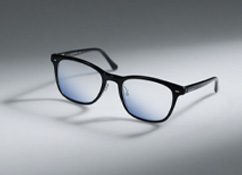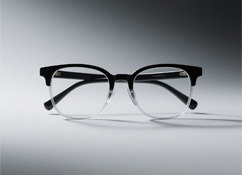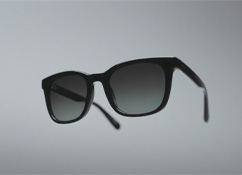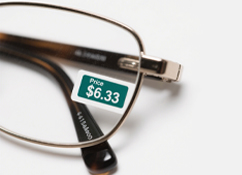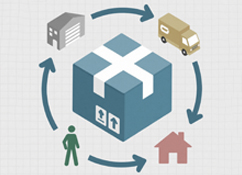Our eyes—paired organs in the head—are one of our most vital tools for understanding the world. Anatomically, the “visual system” includes the eyeball itself and its supporting parts. The eyeball detects light, turns it into nerve signals, and sends those signals to the brain to create vision. The supporting parts? They protect, move, and nourish the eyeball to keep it working right.

Your eyeball sits in a pyramid-shaped bony socket (called the “orbit”) made of seven bones: the frontal, sphenoid, ethmoid, maxilla, zygomatic, lacrimal, and palatine bones. The eyeball is roughly a sphere, with two main parts: the outer layers (eyeball wall) and the inner structures.
From the outside in, the eyeball wall has three layers:
- Fibrous Tunic (Outer Layer)
This tough outer layer has two parts:
Cornea: The clear, dome-shaped front part (about 1/6 of the fibrous tunic). It has no blood vessels but is packed with nerve endings—why a scratch here stings!
Sclera: The “white of the eye,” covering the remaining 5/6. It’s thick, tough, and milky white, helping maintain the eyeball’s shape and protect what’s inside.
- Vascular Tunic (Middle Layer)
Just inside the fibrous tunic, this layer is full of blood vessels (to nourish the eye) and has three parts:
Iris: The colored ring around your pupil (the black dot in the center). Muscles in the iris make the pupil shrink (constrict) in bright light or widen (dilate) in dim light.
Ciliary Body: Connects to the edge of the iris and blends into the next part. It has muscles that adjust the lens shape to help you focus (more on that later!).
Choroid: Covers the back 2/3 of the vascular tunic. It’s loaded with blood vessels and pigment cells, feeding the inner parts of the eye.
- Retina (Inner Layer)
Lines the inside of the vascular tunic and has two main parts:
“Blind part”: Covers the iris and ciliary body—this area can’t detect light.
Visual part: The light-detecting section, with special nerve cells (rods and cones) that turn light into signals. These signals travel through axons (nerve fibers) that bundle together to form the optic nerve—your eye’s “cable” to the brain.
Inside the eyeball, three clear, blood vessel-free structures help bend (refract) light so it focuses on the retina: aqueous humor, the lens, and vitreous humor. If light focuses in front of the retina, you’re nearsighted (myopia); if it focuses behind, you’re farsighted (hyperopia).
-
Aqueous Humor
A clear fluid made by the ciliary body, filling the space between the cornea and lens (split by the iris into “anterior” and “posterior” chambers, connected through the pupil). It bends light, nourishes the cornea and lens, and keeps eye pressure steady. If it can’t drain properly, pressure builds—this is glaucoma, which can damage the retina.
-
Lens
A clear, flexible, football-shaped structure between the iris and vitreous humor. The ciliary body’s muscles squeeze or relax the lens to change its shape, helping you focus on near or far objects (think of it like a camera lens zooming). Issues here cause:
Pseudomyopia: Temporary nearsightedness from strained muscles (common after staring at screens).
Presbyopia: Age-related farsightedness (lens loses flexibility, making it hard to read close-up).
Cataracts: A cloudy lens, blurring vision.
- Vitreous Humor
A clear, gel-like substance filling the large space between the lens and retina. It bends light and helps hold the retina in place. As we age, it can thin or clump, creating “floaters” (tiny spots in your vision). If it pulls too hard on the retina, it can cause retinal detachment (a serious issue where the retina peels away).

The eyeball needs help to work—these supporting parts protect it, keep it moist, and move it:
Your upper and lower eyelids (just “lids” for short) have edges with eyelashes, glands, and tough plates (tarsal plates). They close to shield the eye from dust or bright light. Gland issues here can cause styes (painful bumps) or chalazia (small lumps).
A thin, clear membrane covering the inner eyelids and the front of the eyeball (but not the cornea). Its blood vessels are what make eyes look “bloodshot” when irritated. Common issues:
Conjunctivitis (pink eye): Inflammation from infection or allergies.
Pterygium: A fleshy growth on the white part of the eye, often from sun exposure.
This makes and drains tears:
Lacrimal gland: In the upper outer corner of the orbit, it produces tears to keep the cornea moist, wash away dirt, and fight germs.
Tear ducts: Tiny openings (puncta) in the inner corner collect tears, draining them through ducts to the nose (why your nose runs when you cry!). A cold can block these ducts, making tears overflow.
Six muscles move the eyeball (superior rectus, inferior rectus, medial rectus, lateral rectus, superior oblique, inferior oblique), and one lifts the upper eyelid (levator palpebrae superioris). If these muscles aren’t balanced, you might get strabismus (crossed eyes) or double vision (diplopia).
Eyes aren’t just for seeing—they’re “windows to the soul,” helping us connect with the world and express emotions. To keep them healthy:
Use good lighting for reading/screens.
Take breaks from close-up work (try the 20 - 20 - 20 rule!).
See an eye doctor quickly if you notice pain, blurriness, or redness.






